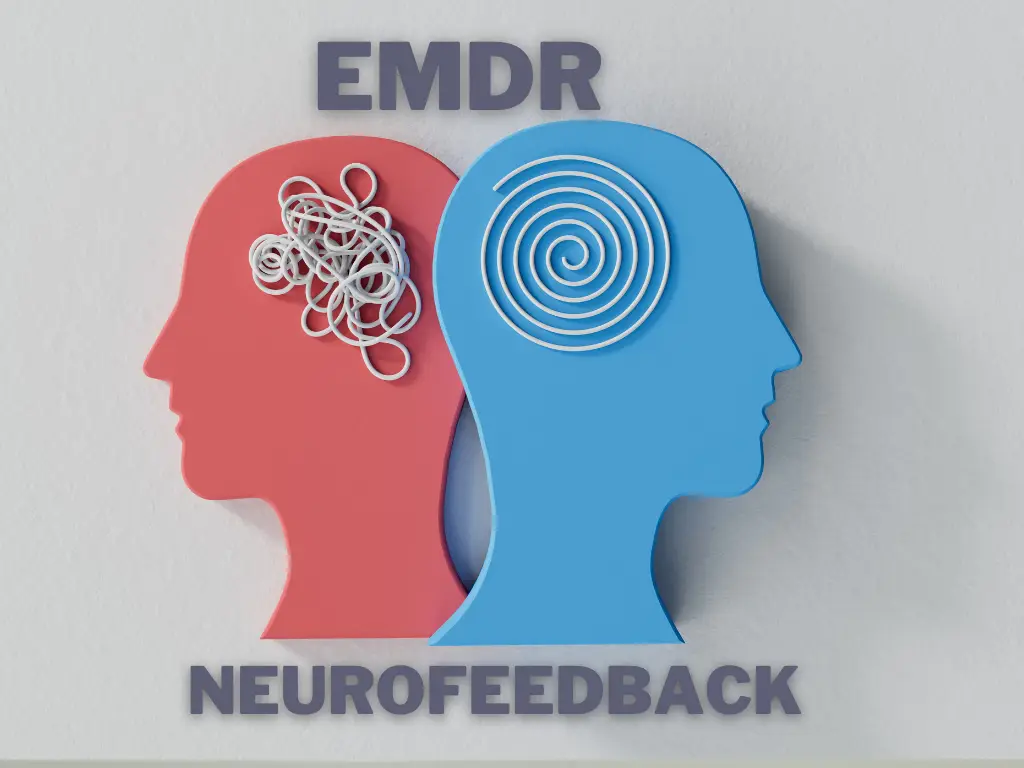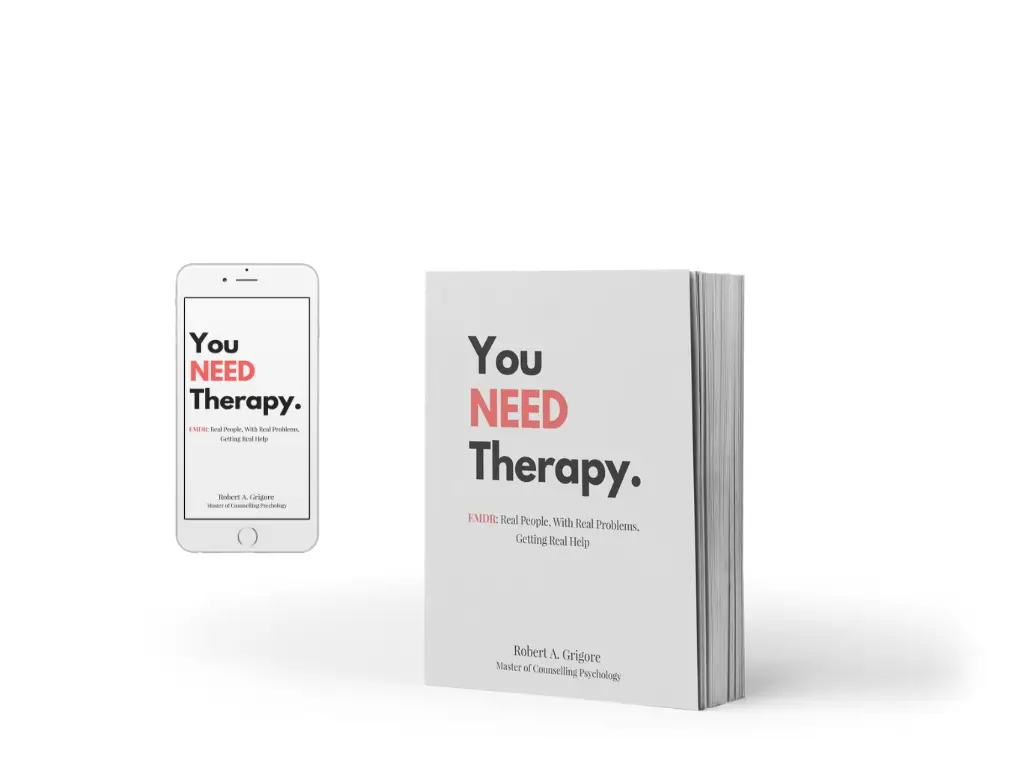EMDR vs Neurofeedback; which therapy holds the key to unlocking your inner healing potential? Our main agenda for today is to help you pick one in the battle of EMDR vs Neurofeedback. Yes, the same video game-like therapy you’ve been hearing about for so long.
Many therapists have been recommending the combined use of EMDR and Neurofeedback to achieve maximum results. And so if EMDR was enough, why bother spending your hard-earned money twice? I’ve seen this question circulating a lot on the internet, so I thought I’ll clear it for you once and for all. EMDR vs Neurofeedback, worth the hype or not? Let’s find out.
Eye Movement Desensitization And Reprocessing
A technique used to treat PTSD and many other forms of mental health distress, EMDR standsfor Eye Movement Desensitization and Reprocessing. It is a comprehensive form of psychotherapy that helps you recover from your past traumas and negative life experiences. If you think your childhood was saddening and even though you really like your therapist, you haven’t really seen much progress, this therapy is for you!
EMDR has been widely used in a variety of populations like to treat PTSD in veterans from Iraq wars, Afghanistan war, Vietnam var, and even World War II since initial efficacy study in 1989. I’ve read the testimonials of a handful of patients who were not seeing good results despite doing everything in their power. But then came along EMDR and those same patients healed completely in 8-12 sessions.
But don’t just take my word for it. Dr. Justin Havens, an EMDR consultant, says that EMDR has such dramatic results that patients can go from constantly being reminded of negative feelings to feeling like it’s all in the past now. He further adds that EMDR is a good way for you if you’re looking to kickstart your healing journey because you have your therapist by your side at each step.
Hear It From The Prince Himself
EMDR basically works by moving your eyes in a certain way while you process your past traumas. And there’s something about this kind of therapy that The Royal was convinced of its benefits. Prince Harry, Duke of Sussex, has undergone EMDR, and do you know what he has to say about it? He says it is the kind of therapy he always wanted to try and that EMDR has helped him feel calmer than ever.
What Prince further had to say about EMDR was that it helped him find new strength in him, and that’s why I think he probably decided to come out about him being in therapy. His openness created a positive ripple effect, making it easier for more and more people to seek the support they need. Especially considering the concerning statistic that one in every 6 young people is going through a depressive episode. The tapping you can see in the picture below is a part of the process.

Neurofeedback
Now, let’s talk about neurofeedback, shall we? Neurofeedback therapy is a type of biofeedback therapy that focuses on teaching the subjects self-control of brain function. This isn’t a new therapy; in fact, the use of neurofeedback goes back to the 1950s when it was used by NASA to train astronauts (they still do so, though).
This kind of therapy is used to improve brain functioning and is done by focusing on the neuronal activity of the brain. Neurofeedback utilizes the power of real-time feedback to train your mind, but like every training, it takes time (almost 5-10 sessions for many to observe small changes). It is supposed to be an aid for patients with ADD, ADHD, autism, insomnia, etc.

Are There Possible Side Effects To Neurofeedback?
Neurofeedback is a therapy designed not only to change how you think and feel but also to train your brain to develop healthier patterns of activity and ultimately to function better. And I personally think it’s insanely genius if you can train your brain in a way that it looks for rewards and avoids things that lead to punishments.
But the point is, is neurofeedback really effective? Well, the results of neurofeedback are still a debatable topic. Even if I neglect the low positive results for neurofeedback, how do I ignore the downside that neurofeedback can disturb your normal brain waves? Yes, neurofeedback can stimulate the frequencies of beta or gamma waves which in turn might stimulate your panic, anxiety, or racing thoughts.
EMDR vs Neurofeedback | Pros And Cons
Let’s weigh some pros and cons of EMDR vs neurofeedback so that you can make a better pick for yourself. Starting with EMDR, here we go:
Pros Of EMDR:
- Highly effective
- Rapid results
- Non-invasive
- Addresses underlying issues
- Individualized
- Low risk of harm
- No medication required
- No preparation required
- Endorsed by world-wide health authorities
- 30+ years of research
Cons Of EMDR:
- Intensity of progressing

Pros Of Neurofeedback:
- Potentially effective
- Safe to use
- Lower intensity
- No medication dependency
Cons Of Neurofeedback:
- Limited research
- Costly
- Time-intensive
- Variable results
- Not a cure-all
EMDR vs Neurofeedback. Given the pros and cons of each, whose side do you think weighs more? Some researchers argue that the limited results neurofeedback is giving can partly be due to a placebo effect instead of actual changes in brain functioning, which makes the effectiveness of this treatment further questionable.
EMDR vs Neurofeedback – What’s The Final Verdict?
So, who wins the EMDR vs Neurofeedback debate? I’ll be summarizing today’s discussion on the basis of the following comparison chart. Have a look!

All in all, EMDR vs neurofeedback both hold their own benefits in the treatment of disorders like ADHD and PTSD. So, do I recommend combined use of Neurofeedback and EMDR? Yes, you can, for improved results.
It is true that there are people who have benefited from this “game from the future” kind of therapy but the lack of scientific evidence and the wide range of side effects seen make me question this. Is it worth taking the risk? Besides, when you have a therapy like EMDR that has even brought 100% success rates in studies, why would you look for an alternative?










